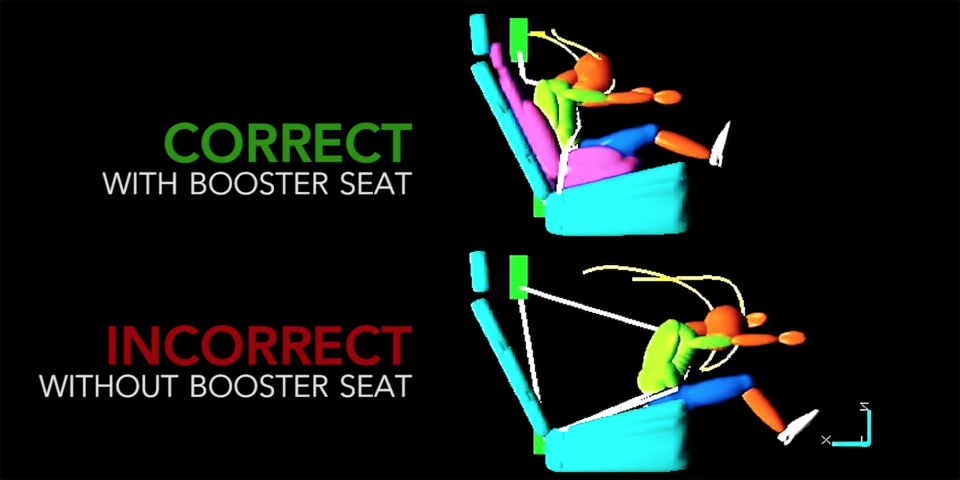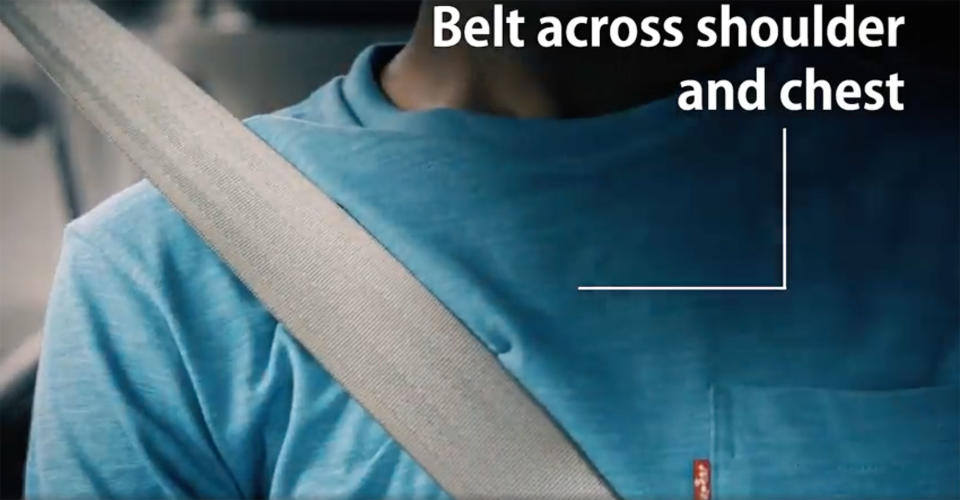A Scary New Video Shows the Booster Seat Mistake Many Parents Make

As a parent you know that car and booster seats are important, but one eye-opening new video says your child may need the latter for longer than you think.
Eastern Virginia Medical School shared an intense video to their Facebook page a few weeks ago that shows an almost 10-year-old boy going out for a car ride with his mom. At first glance, he seems totally safe buckled up in the back seat, but the scene quickly changes when the car crashes in a serious auto accident.
Think your kid is big enough to ride without a booster seat? You might want to think again and watch this.(Captions have been added. For additional information and FAQs, visit http://www.boosterseats4safety.org/)
Posted by Eastern Virginia Medical School on Thursday, November 16, 2017
The mom is banged up, but it's the boy who is knocked unconscious and taken on a stretcher to the hospital. The scene then cuts to doctors discussing serious diagnoses like organ damage as well as neck and vital structure injuries. The moment of realization happens when the pediatric resident asks the mom if her son was in a booster seat. She admits that she didn't think he needed to be given his age.
The medical staff then goes on to offer some pretty scary stats: an unrestrained child even at 30 miles per hour will experience the same force as if they fell out of a third-story window.
"Far too often we see many kids come in with internal organ damage, damage to the large vessels," explained Dr. Phillip Thomas, a pediatrics resident at Eastern Virginia Medical Center. "The shoulder strap sits improperly across the child's neck putting at risk the child's internal structure of the neck such as the trachea, spinal column and also some very crucial vasculature as well - all due to improper use of adult safety belts in kids that should have otherwise been in a booster seat."

"The transition period after the forward facing seat is when a booster seat becomes vital," adds Georjeane L. Blumling, Ph.D and a Child Passenger Safety instructor at the American Automobile Association Tidewater in Virginia. "Children simply do not fit in a vehicle with an adult seat belt until they are at least 4'9."
The video finishes by explaining that parents should conduct what's called a "seat belt fit test" when deciding if their kid needs a booster:
Before your child transitions into a seatbelt, he or she should be able to sit with their back completely against the seat with his or her knees bent at the edge of the seat and their feet flat on the floor. The shoulder belt should come across the shoulders and the chest so it's not going over the neck or their face. Children should also avoid putting their seat belt behind their back or under their arm, as it can cause the lap belt to rid up over their abdominal area rather than sitting low across the hips where it should be in the event of an accident. A booster seat prevents these problems by raising the child up so that their seatbelt can properly fit.

In addition to these tips the Good Housekeeping Institute suggests following these recommendations from the National Highway Traffic Safety Administration:
• Select a car seat based on your child's age and size, then choose a seat that fits in your vehicle, and use it every time.
• Always refer to your specific car seat manufacturer's instructions (check height and weight limits) and read the vehicle owner's manual on how to install the car seat using the seat belt or lower anchors and a tether, if available.
• To maximize safety, keep your child in a car seat for as long as possible, as long as the child fits within the manufacturer's height and weight requirements.
• Keep your child in a booster seat until he or she is big enough to fit in a seat belt properly. For a seat belt to fit properly the lap belt must lie snugly across the upper thighs, not the stomach. The shoulder belt should lie snugly across the shoulder and chest and not cross the neck or face. Remember: your child should still ride in the back seat because it's safer there.
• Keep your child in the back seat at least through age 12.
The NHTSA also has a calculator to help you find the right car seat for your child based on their age, height and weight. You can access the tool here, by scrolling down to "Car Seat Finder."
[h/t: Scary Mommy]
You Might Also Like

